Supermodels’ Docuseries Shows Their Humanness
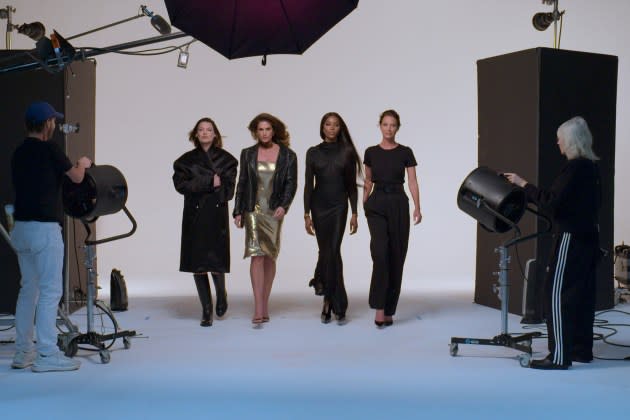
For millions of people, regardless of whether they are interested in fashion or not, Cindy Crawford, Christy Turlington, Linda Evangelista and Naomi Campbell can be identified by sight alone.
Now the just-out Apple TV+ docuseries “The Super Models” reveals much more than obvious beauty. Far from anything along the lines of the secret lives of supermodels, the four-part series amounts to nearly four hours of flashbacks, current takes and future plans.
More from WWD
Balmain Hit by Robbery, British Vogue's Big Week, Naomi Campbell Turns Out for Mains
Naomi Campbell, Stormzy and Louis Theroux Turn Up for Skepta's Runway Show
Spoiler alert: This would be a good place to stop reading if you prefer to experience the four episodes yourself.
Now in their 50s with children of their own, the foursome shared snapshots of their younger selves. Turlington’s pre-modeling work experience involved babysitting and cleaning stalls. Long before she demanded $10,000 just to get out of bed, Evangelista’s first paycheck came from being a convenience store employee. Campbell described how driven she was as a dancer in childhood, even when auditions ballooned to 600 people and her mother tried to manage her expectations.
More than anything, the series humanizes the supermodels through personal accounts of tougher moments, like Crawford’s brother dying of cancer as a child, Evangelista’s allegations of an abusive relationship with her ex-husband Gérald Marie, Campbell’s battle with addiction and decision to go to rehab and Turlington’s medical scare after giving birth to her daughter, Grace. All of those challenges, however, have been subsequently put to use to benefit others.
While their lives were and still are at times ultra-glamorous, the series seems to emphasize their humanness. Evangelista emphasized how she so regrets having ever made that “$10,000 to get out of bed” statement. She also details being stricken with breast cancer twice, finding the courage to leave Marie and the heartbreak she felt for the victims, who came forward in 2020 and claimed that Marie had raped or sexually assaulted them in the ’80s and ’90s. The series noted Marie has denied that and French prosecutors closed an investigation into the matter earlier this year, due to the statute of limitations. Evangelista also spelled out how becoming disfigured from CoolSculpting sessions had triggered a serious depression that had resulted in her only leaving her home for medical appointments at one point.
Turlington recalled how she was not about to feel bad for being released from a show after having put on a few pounds due to quitting smoking.
Each episode has a theme — “The Look,” “The Fame,” “The Power” and “The Legacy.” Although there is plenty of air-time of each supermodel addressing the camera head on, the archival footage of them on location, in a studio, out at night or on TV is what reels viewers in. They also draw back the curtain a bit about what made them so in-demand. During a visit to Arthur Elgort’s downtown studio, Evangelista asked about a 1991 shoot of her decked out in a plaid kilt and feather bonnet, following a bagpiper with one leg kicked skyward. Elgort reminded how they needed only two shots, since she had informed him, “I know what to do.”
Elgort is one of many fashion insiders who are featured in the series. Michael Kors, Marc Jacobs, John Galliano, Kim Jones, Donna Karan, Valentino, Karl Lagerfeld, Calvin Klein, Todd Oldham, Anna Sui and Isaac Mizrahi are among the designers. Fabien Baron, Tim Blanks, Robin Givhan, Michael Musto, Michael Gross, Polly Mellen, Tom Freston, Edward Enninful, Bethann Hardison, Suzy Menkes, Anna Wintour, André Leon Talley, Tonne Goodman and others help contextualize the four-part series. Sometimes their insights are fleeting.
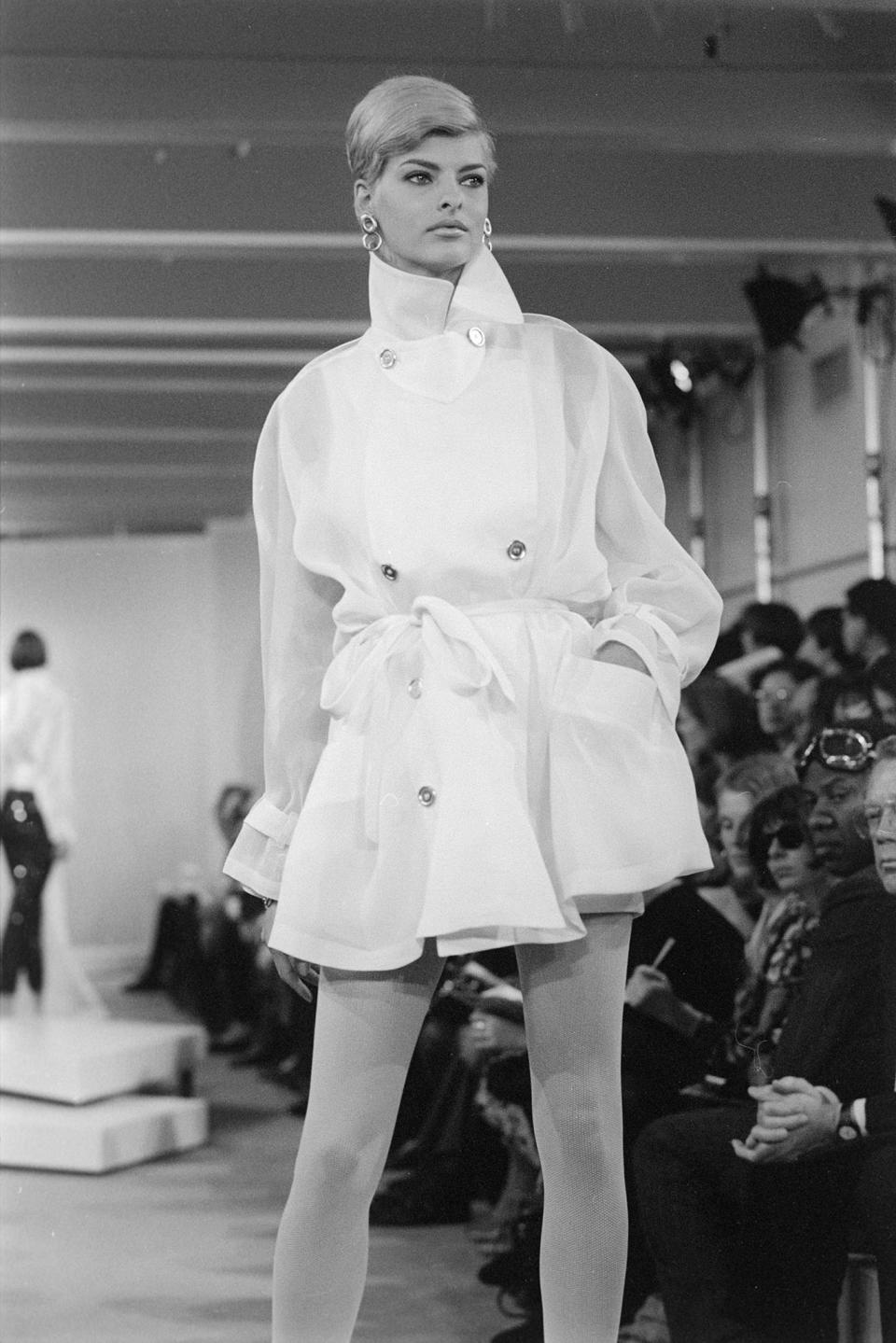
That was also the case with flashes of such classic photos such as Arthur Elgort’s eerie shot of Turlington in New Orleans peering out of a car’s sun roof or Roxanne Lewitt’s “Three Models in a Tub” of Campbell, Turlington and Evangelista, flash within an instant, which somehow suits the catch-them-while-you-can appeal that made them so wildly popular. More recent clips, like one of Campbell riding an ATV in Kenya or another of her seemingly having a hot flash on set, may broaden viewers’ perspectives.
All in all, though, whether it’s imagery from their high-flying heyday or less faraway assignments, what stands out is movement. Far from expressionless, stand-still models, they take action, using their presence, agility or commanding runway walks. Without question, the series explores the complexity and troublesome sides of their careers — such as Evangelista’s recollection of her traveling to Japan as a teenager for a job and being freaked out after being asked to take her clothes off. More apt to imply, than spell out anything unsavory, Crawford states that the Sports Illustrated swimsuit issue was “not a good experience” for her, because she “had an opinion.” No matter — she just moved on and did her own swimsuit calendar, as well as an exercise video, a signature home line and numerous other business ventures. Her business prowess is a recurring theme.
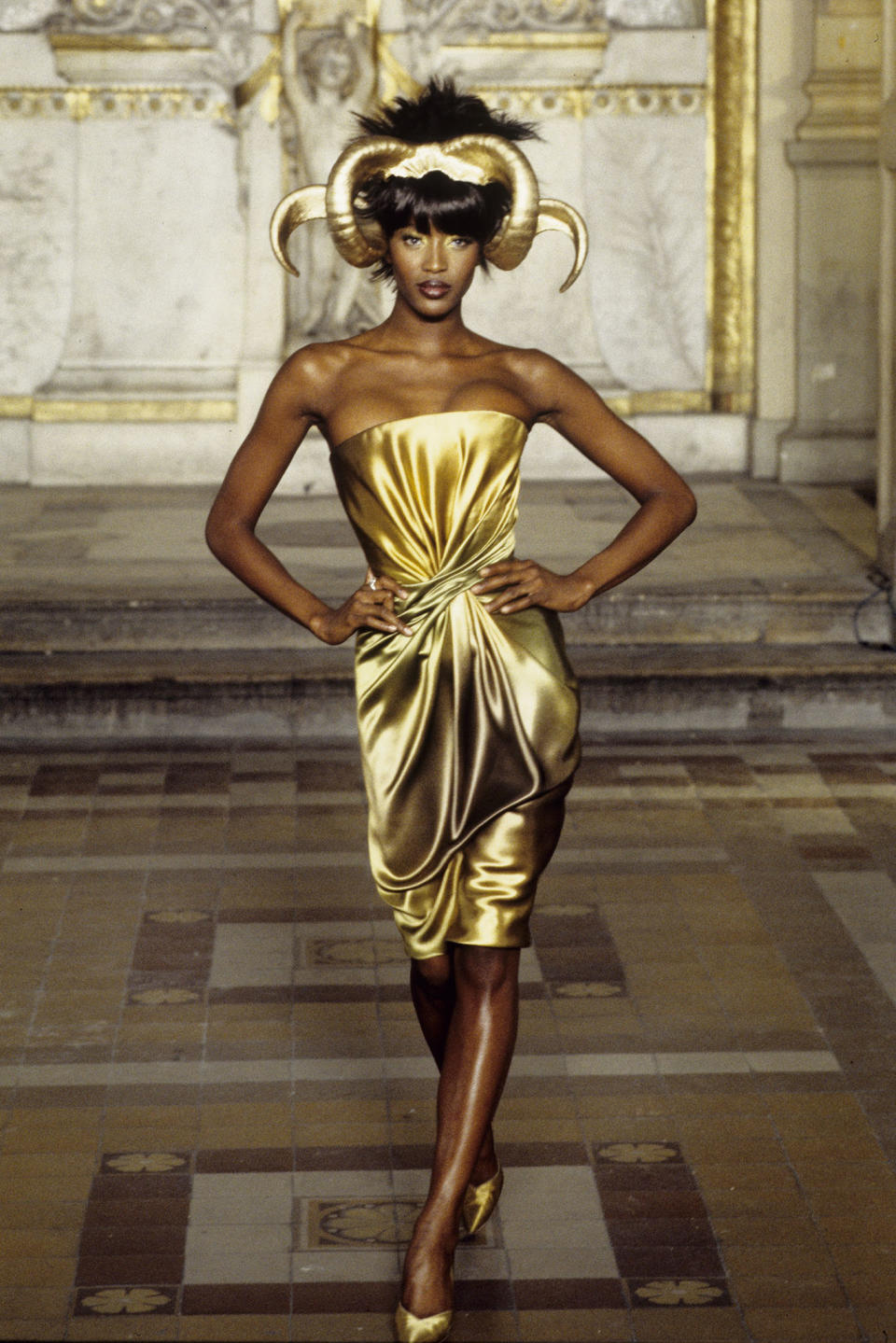
Campbell, who is often featured seated in a director’s chair speaking directly into the camera, was candid about how people in the fashion industry had largely ignored India, Africa and the Middle East. “I guess you’d call it discrimination. I was a part of that too and I feel ashamed for that,” she said, but highlighted the ways in which she is rectifying that by recognizing emerging talent and working in those places. Addressing her struggles with addiction, she mentioned helping others. Jacobs recalled how she seemed to call at a time when he was partying a little too much and Galliano spoke of how she steered him through a dark period in his life.
Interestingly, the lighter carefree moments are less of a focus, despite that being what many associate with the globetrotting supermodels. Looking at an experience through the lens of time, Crawford critiqued Oprah Winfrey for having had the model stand up to show off her physique, during a 1986 television appearance on Winfrey’s talk show.
In one of the other docuseries’ episodes, Crawford said they were made to feel that they were the physical representation of power, but where it gets tricky is many people don’t fit that. She also described how it got to the point after runway shows that hundreds of people were pouring backstage while they were in various stages of undress. Evangelista hired a bodyguard to shield her and also bought a can of spray paint that she would shake and threaten to spray photographers’ lenses if they didn’t disperse.
One area that is largely absent from the documentary was how the world’s leading models stayed in such tip-top shape. Nor were there any extensively detailed accounts of the degree to which other models at that time may have been extreme dieters or suffered from eating disorders, which remains an age-old problem among many models. One exception was Crawford recalling how as a young model working in Chicago with the physically demanding Victor Skrebneski, fainting before lunch could happen on occasion. And Turlington recalled how she was not about to feel bad for being released from a show after having put on a few pounds due to quitting smoking. The reality was she lost her father to lung cancer and appeared in anti-smoking commercials and advocated in Washington, D.C., to debunk the myth of smoking. Turlington’s global commitment to improving maternal health through Every Mother Counts is also highlighted.
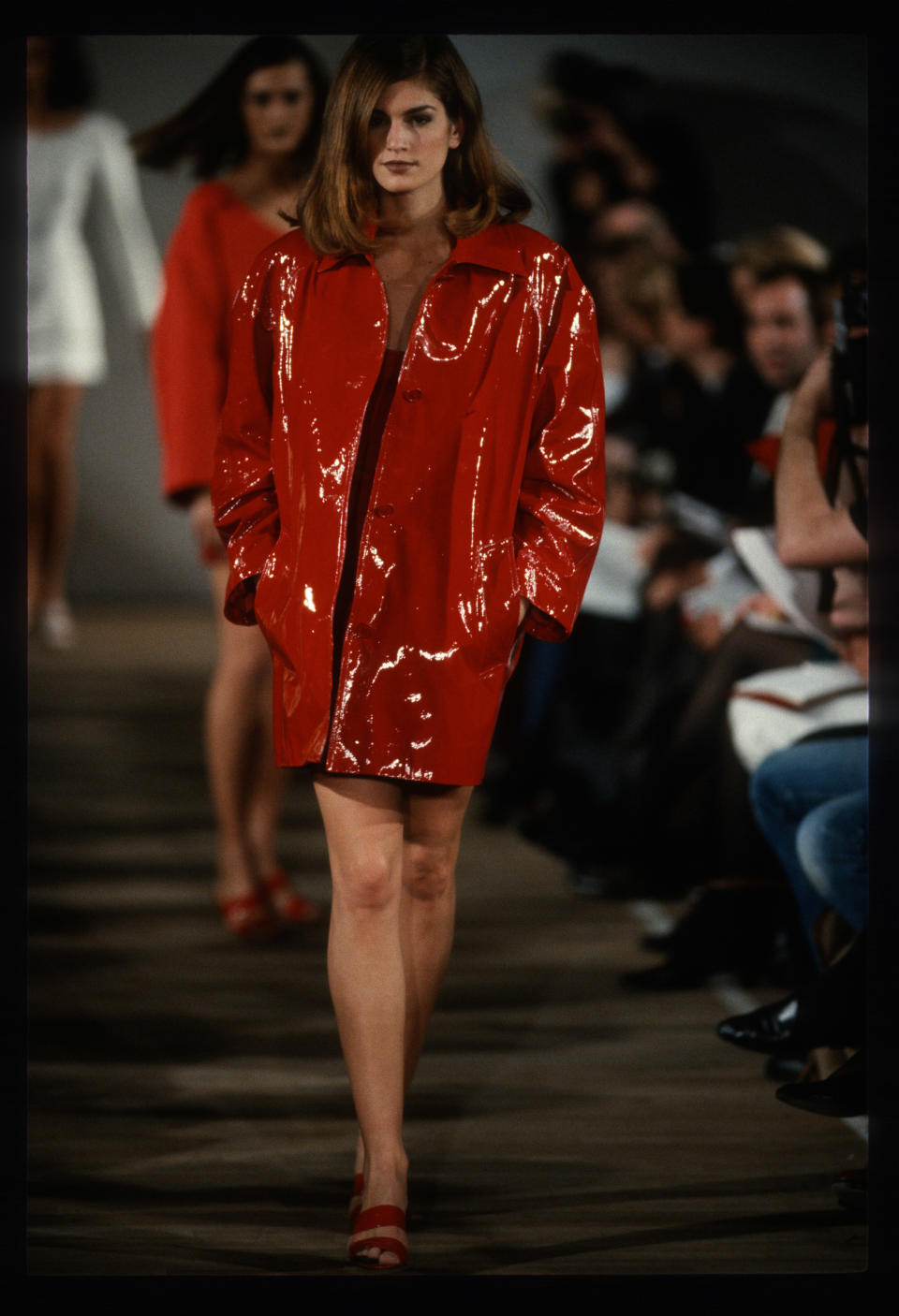
Rivalry is another subject that is mentioned more in passing than in depth. Campbell and Crawford said there was no competition between them. The third episode about power brings to light such headier issues as how the fall of Communism ushered in a new era of Eastern European models, how the end of conspicuous consumption impacted the public’s view of glamour, how major designers did not like being eclipsed by the supermodels, how the rise of both hip-hop and grunge led to more relaxed dress codes, the supermodels exemplified an unattainable beauty myth and how their surging popularity led to photographers trampling on their privacy.
Campbell said that after balking in a meeting at a low-ball offer for a Revlon contract her agent at that time, John Casablancas, who cofounded Elite Model Management, was embarrassed and portrayed her as being difficult. Having been told beforehand by her peers what they were earning, she had gone into the meeting well-prepared and wasn’t about to settle for less. On another front, it was suggested that the waif look that was popularized by Kate Moss and others was almost a rejection of everything supermodels embodied at that time — although Moss is considered a supermodel by many.
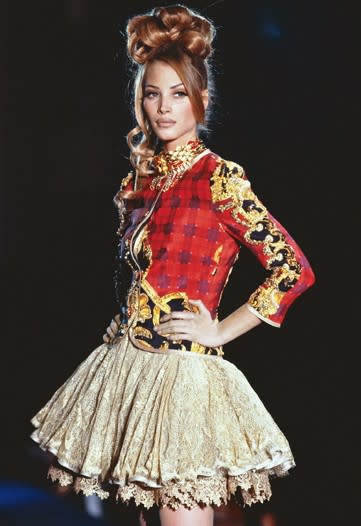
Designers’ interest in Eastern European “expressionless” ultrathin models was a more affordable option, allowing them to hire 40 models versus 10 big-name ones. That strategy also placed the focus back on the collections instead of the models who were wearing the clothes. Former model and activist Bethann Hardison said, “It wasn’t so much about race as eradicating anything distracting from the clothing to put the focus on the clothing.”
The influence of the gay community and drag culture is also mapped out. Another one of the more poignant points of the series is each model’s account of where they were and how they learned that Gianni Versace had been killed in July 1997. En route to meeting Donatella Versace and her brother Santo on that fateful day, Campbell said there were so many photographers that she had to climb up a hotel laundry shaft to evade them.
Their teary recollections underscored how transformative Gianni Versace was in their lives and careers by encouraging them to be themselves on the runway. In a clip, the late designer says, “I always say, ‘Don’t be afraid of who you are, because the only fashion you can wear is to be yourself.'”
Isn’t that what being a supermodel — real or imagined — is all about?
Best of WWD
